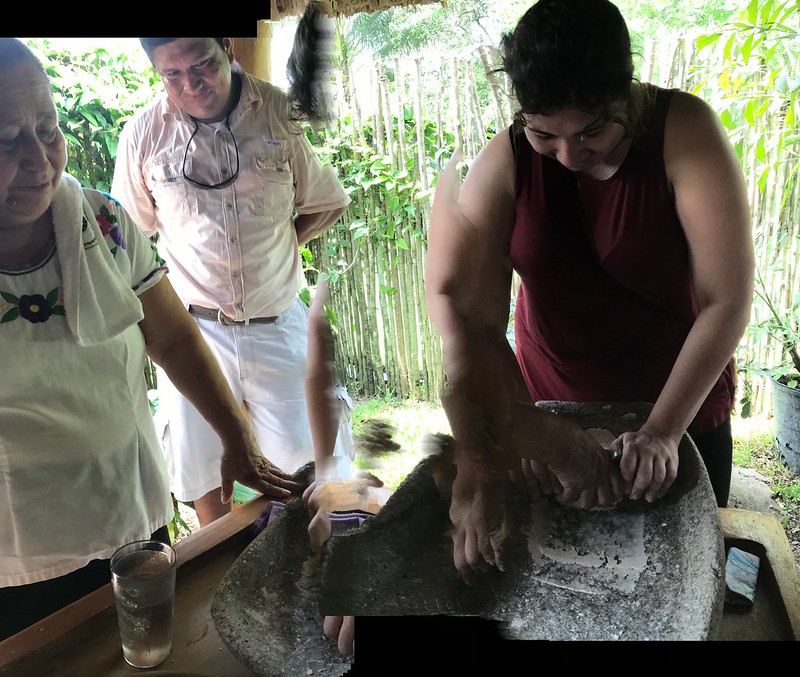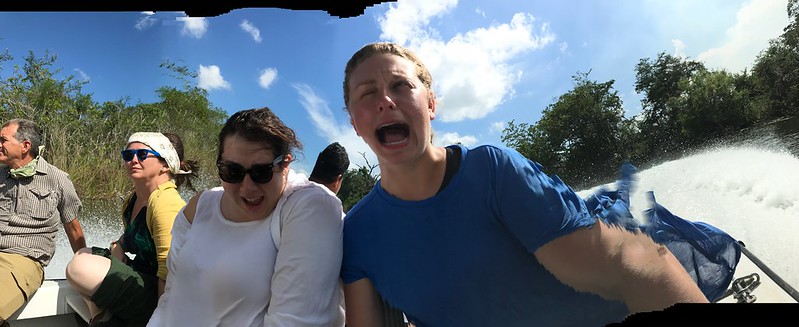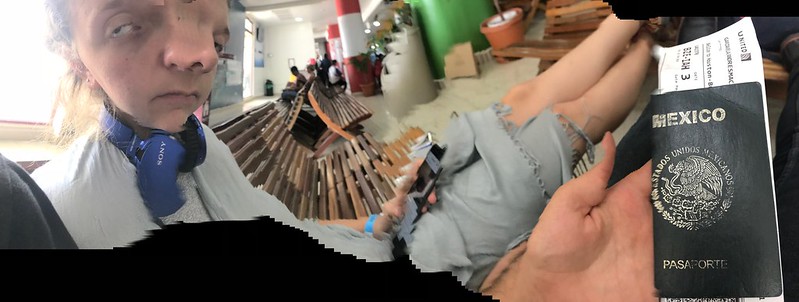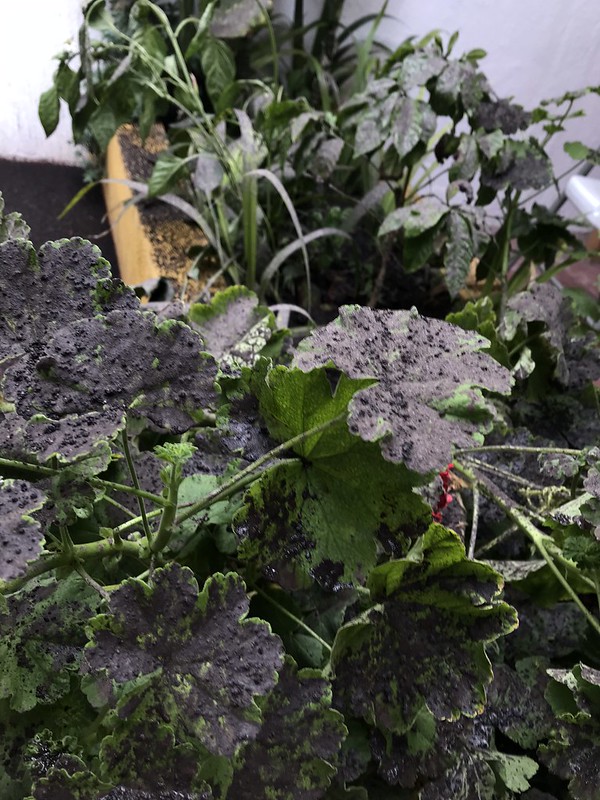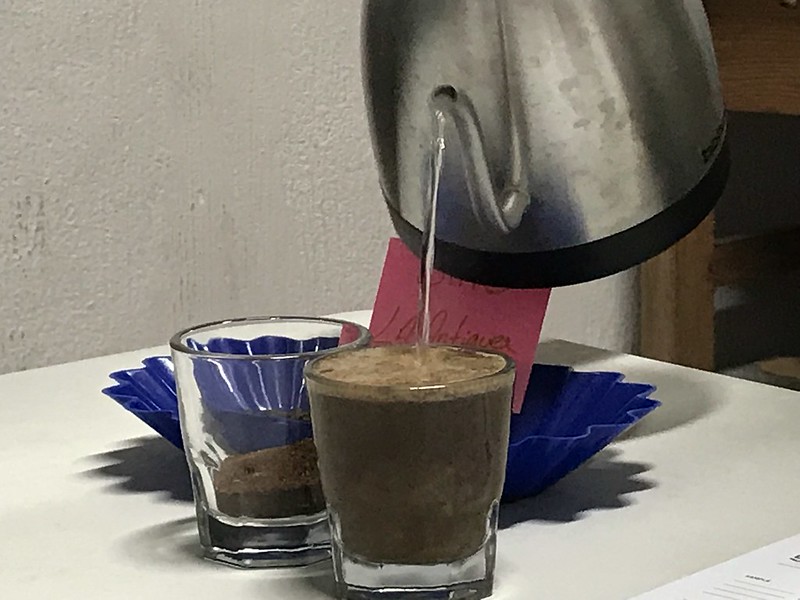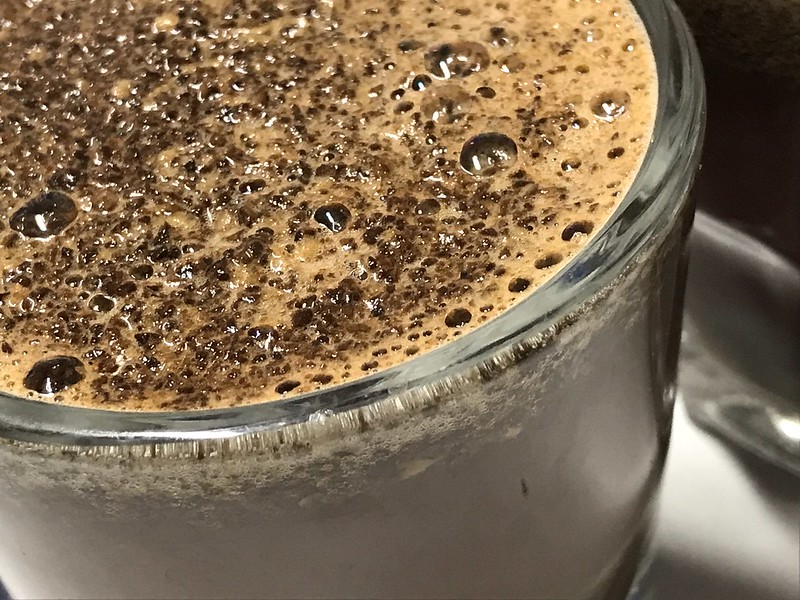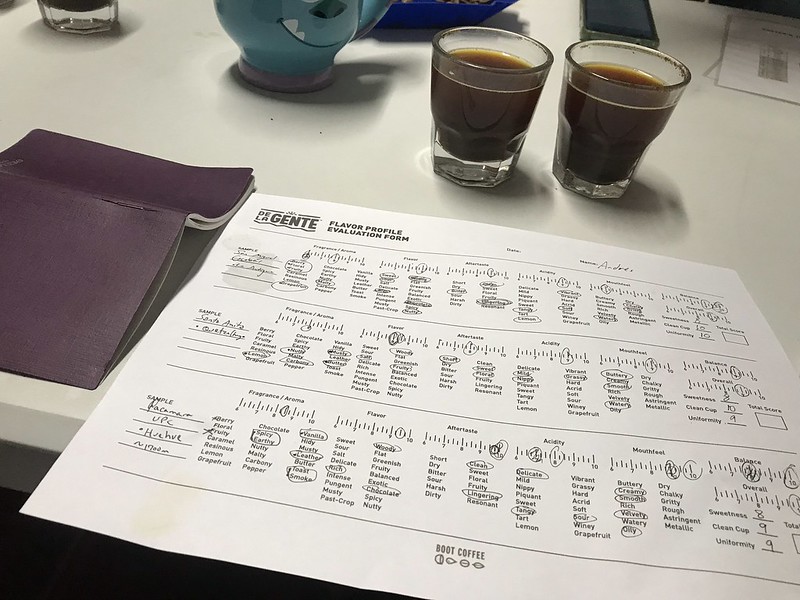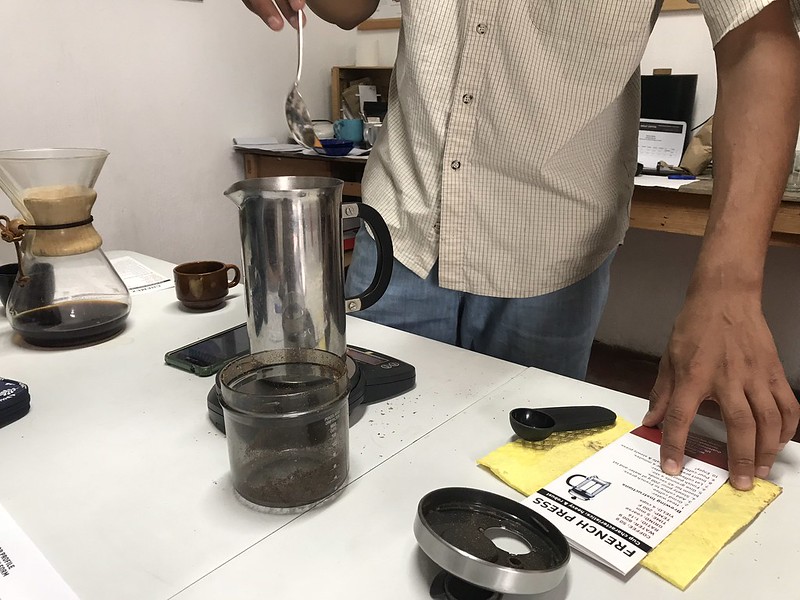Oh hi! I’m home now, I was shocked at all the free water restaurants gave us in the US. I forgot it’s all purified, small reverse culture shock. We went to Belize, we moved fast, so it was all hard to keep my mind in tact. Also hard to keep my pictures in tact, I will recap through broken panoramas. Let’s jump right in to Belizarama alongside our buddy Alan:
We all got to learn how to make tortillas, it was really fun. My whole time abroad I spent eating all the corn, as much corn as I could. My project was on corn. People there eat a lot of corn and it can be good or bad, good because it will keep a person full for cheap. Bad because it shouldn’t be the only thing a person survives on, but it is what is most affordable and accessible for many. It’s a weird balance of appreciation and many things, but I love corn. Look @ our lovely TA, Catherine, grinding up some corn. Requires many many muscles! I was very bad at making tortillas. The same women who showed us how to grind… corn, then showed us how to make pottery, I was also very bad.
We drove all around the country of Belize. Up down left right. Crossed all the way to the north near Yucatan in Mexico to a town called Orange Walk. It was filled with people who worked in the sugar industry and had many Belize-Chinese restaurants. There’s many unique pockets of immigrants and blends of language that I fell in love with. Anyway, there’s a new long slithery river, appropriately called the New River that we maneuvered our way through with the help of a lovely guide. He knew a lot about the local wildlife. He also drove and drifted really fast, I had a blast, some others… I don’t know.
Ever since we left Antigua for the lowlands, things have been quite warm. By warm, I mean extremely humid and hot and very very sweaty. Saw our last bits of Maya ruins at Lamanai after twirling through the New River for 2 hours. It was quite hard to process a lot of what we were standing over, even after the amount of readings and interactions we had with the land, grasping even just a bit felt rough. On the bright side, I learned how to crack tree nuts to extract palm oil while there. Don’t use limestone, use harder rocks. There is only limestone on the top, I learned that the hard way and had to make a trip all the way down and back up to crack a few.
We left there and then spent a couple days in the island of Caye Caulker. I zoned out for the majority of it and stuck my feet deep down in the sand, had bad iced coffee and focused on finishing my project. It was quite a nice way to wrap up the trip, relaxing. I didn’t take many pics, I took it slow. But here’s a snip snap from inside the room we presented in.
Felt like a proud dad listening to all these people I got to get close to present something they all felt a lot of love for. Leaving was tough, it felt like a weird end, but wow was it all a fun fun ride. I have nothing else to say, here’s a pic of my hand and a morphed Kendall. A see you later to all. bye bye Belizarama



